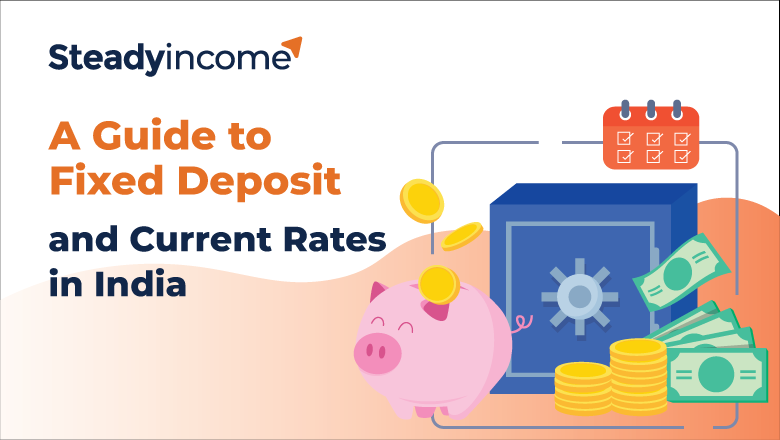A Guide to Fixed Deposit and Current Rates in India

Fixed Deposit have long been a popular investment choice in India, offering individuals a secure and reliable means to grow their savings. With fluctuating interest rates and evolving market conditions, it is essential for investors to stay informed about the current rates and understand the various factors that influence them. In this blog post, we will explore the concept of Fixed Deposit, discuss the factors affecting interest rates, and provide an overview of the current rates in India.
Understanding Fixed Deposit
Fixed Deposit are financial instruments offered by banks and non-banking financial companies (NBFCs) that allow individuals to deposit a lump sum of money for a fixed period at a predetermined interest rate. The interest rate remains constant throughout the tenure, providing investors with a predictable return on their investment. At the end of the tenure, the principal amount along with the accrued interest is returned to the investor.
Factors Affecting Fixed Deposit Interest Rates
- Monetary Policy: The Reserve Bank of India (RBI), the country's central banking institution, plays a crucial role in determining interest rates. The RBI's monetary policy decisions, including changes in the repo rate, reverse repo rate, and cash reserve ratio, impact the interest rates offered on Fixed Deposit. When the RBI increases the repo rate, it typically leads to higher FD interest rates, and vice versa.
- Inflation: Inflation is another significant factor influencing fixed deposit rates. Higher inflation erodes the purchasing power of money over time. To offset the impact of inflation, banks and NBFCs may offer higher interest rates on Fixed Depositto attract investors and maintain their real rate of return.
- Liquidity and Market Conditions: The liquidity position of banks and prevailing market conditions also influence fixed deposit rates. If a bank faces a shortage of funds, it may raise FD rates to attract deposits and improve liquidity. Additionally, competition among banks and NBFCs for deposits can lead to variations in interest rates.
Current Fixed Deposit Rates in India
It's important to note that fixed deposit rates can vary among banks and NBFCs. As of June 2023, the average fixed deposit interest rates in India range from around 4% to 7%, depending on the tenure and the institution. However, these rates are subject to change based on market conditions and policy decisions.
To find the most up-to-date and accurate fixed deposit rates, it is advisable to visit the websites of banks and NBFCs or consult with financial advisors who can provide personalized guidance based on your investment preferences and goals.
Benefits of Fixed Deposit
- Safety and Stability: Fixed Deposit are considered one of the safest investment options as they are backed by the guarantee of the issuing bank or NBFC. They provide a stable and predictable return, making them ideal for risk-averse investors.
- Regular Income: Fixed Deposit offer the option of periodic interest payouts, providing a regular income stream. This feature is particularly beneficial for individuals seeking a steady source of income during their retirement years.
- Flexible Tenures: Investors can choose the tenure of their fixed deposit according to their financial goals, ranging from a few months to several years. This flexibility allows for short-term or long-term investment planning.
Conclusion
Fixed Deposit continue to be a favored investment avenue in India, offering individuals a reliable and secure means to grow their savings. By understanding the factors that influence fixed deposit interest rates and staying informed about the current rates, investors can make informed decisions and maximize their returns. It is crucial to conduct thorough research, compare rates offered by different institutions, and consult with financial experts to align fixed deposit investments with individual financial goals and risk profiles.


